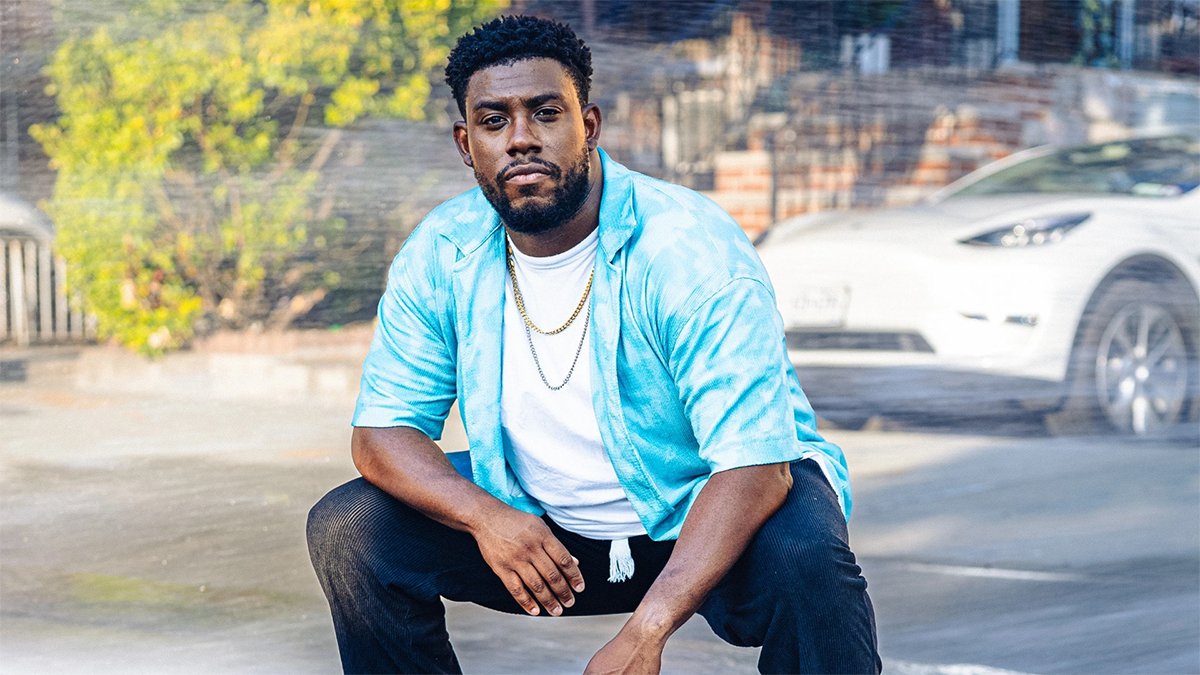Malik K. Buie and Kim Osorio talk about their latest project, Tale of the Tape, a hip-hop documentary focusing on the evolution of the mixtape game, which gave rise to many of the genre’s biggest stars.
I got the chance to watch the screener today. Phenomenal job. Well produced. I mean, it was really refreshing because I grew up during that time. What inspired you guys to create the documentary about the history of mixtape culture in hip-hop?
Kim: First of all, thank you. Thank you for taking the time out. Thank you for watching the film. And we appreciate the opportunity. You know, we are students of hip-hop. We are storytellers. We are documentarians. Through our years and through my years of working with different artists and different DJs, et cetera, mixtapes were always the connective tissue. They were always the things that got these DJs, you know, going, got these artists started. And it just made sense to tell the story. And we wanted to make sure that we did our best to tell a complete story.
Absolutely. So, how did the production timeline from 2012 to 2022 shape the final product of the documentary?
Malik: Wow. All right. So, I’ll start, but Kim, you have to finish this one. Whenever you start a documentary, you always think like, you know what? I’m going to film for eight months, and I’m going to edit for four, and I’m going to be done. And I couldn’t have been more wrong. A lot of things changed, just technically, from what we used in regard to cameras, lenses, et cetera. The landscape of music changed—how people get their music, how they perceive their artists, all of that. And we just made sure we kept an open mind when we were adding certain things because the basis of the story was always there. We knew who we wanted to feature, but how we wanted to feature them definitely played a big part. Once the pandemic happened, that kind of changed how we ingested our music. And that’s why D-Nice is a big part of it at the end.
Kim: And I’ll just add to that, Ben. In the absence of a deadline, when you’re working on things on your own for yourself, it can get to a point where you never want to finish something. When we’re telling these stories and doing these interviews, there’s always something more we could say or something else we could get. And I think at a certain point, we both just had to say, we’ve got to get this out there. So, it was just years in the making for us, like accumulating footage, writing and working on the edit, and making sure we were tweaking it down to the very last minute. And so, we just had to come to a point where we’re like, all right, it’s time to get this out there.

Well, it’s definitely amazing. Can you describe the roles each of you played in bringing this documentary to life?
Malik: As a director, you know this started honestly on like a napkin. When I was working at BET, I was just kind of scribbling about what the logo would look like with one of the early animators. I just knew I wanted to make this film. I wasn’t sure just how yet. I know one of the first interviews we did was definitely Brucie B. And after that, I talked to Kim because I really wanted us to partner on doing this doc. And then she just kind of jumped right in, giving it a story perspective. It was my job to make sure it looked a certain way, and everything else was Kim’s in regard to the flow of the story and how it was narrated.
Kim: I think a lot of people who know me and know what I’ve done in my career, automatically assume that I was right there during the production, doing the interviews, and Malik and I have worked together and collaborated on a lot of things. But when this came to me, he had already done all that work. I’m somebody who has always complained that people don’t really know me. Yes, they might know my career at The Source and the interviews I’ve done, but people don’t know that my real passion is storytelling. I like sitting with footage. I like getting to tell and shape a story. And it goes back to when I started, I love to write. And for me, that was sort of like the big thing with this doc, being able to shape it with Malik, and being able to really write and put a story together.
What was the process of securing previously unseen performance footage of artists like Kendrick Lamar and J. Cole?
Malik: So, all of that aside, I actually filmed it in person when it happened. We don’t have a lot of archival footage licensed from elsewhere. That Kendrick Lamar show that was in Atlanta when he only had released Section 80. He and Dom Kennedy were headlining a show that had 2 Chainz, Big Sean, and Cyhi the Prince as the opener. Honestly, DJ Drama was probably the biggest name on the marquee. I think it was DJ Drama and Friends. We did the J. Cole interview in a park. He was working on his first album. It wasn’t completed yet…The majority of the footage, I filmed with my cameras.
Kim: I think one of the things that I wish I knew maybe 25 years ago was how valuable content would be today for a project like this. So, I think Malik had the foresight to be able to go and capture that footage right at the time. It was sort of like ‘ahead of the game’ thinking.
What challenges did you guys face during production, and how did you overcome them?
Malik: I’d say that as far as challenges, there were a couple of interviews that we really wanted but weren’t able to get. The biggest one was probably like Ron G, and I would say K Slay. It was a scheduling issue. A lot of these guys are on the road, or they are not in town anymore, et cetera. Unfortunately, K-Slay got sick before we were able to make that happen. But all in all, it wasn’t too troubling because a lot of these guys were willing and ready to tell their stories, which was the beautiful part. These DJs are like a fraternity of sorts. They have a lot of love and admiration for each other. And so, they were more than willing to share somebody’s information so we could get in touch to make things happen.
How did you approach the task of balancing historical accuracy with engaging storytelling?
Kim: Oh, that just comes from doing a lot of research. I think when you’re going through stuff and you’re putting the story together, I feel like you always have to balance out what one person is saying. Obviously, there’s a lot of research involved when you’re doing that. To go back to the other question about challenges, there’s always going to be challenges, but one of the biggest challenges is when you’re not getting those interviews. Because if one person has a story and they tell it one way and another person is unavailable for an interview, it’s sort of hard to balance it out. You don’t have that other voice. However, I think we do a good job of doing that with the voiceover, and the writing of it all.
BE’N ORIGINAL












